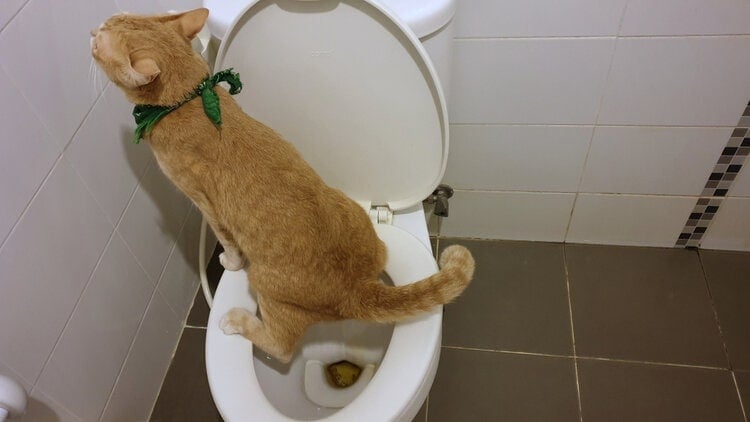Potential Issues of Flushing Cat Poop Down Your Toilet - Safeguard Your Plumbing
Potential Issues of Flushing Cat Poop Down Your Toilet - Safeguard Your Plumbing
Blog Article
Every person seems to have their private thinking on the subject of Don’t flush cat feces down the toilet.

Intro
As cat owners, it's vital to be mindful of how we deal with our feline pals' waste. While it may appear practical to flush cat poop down the bathroom, this method can have destructive effects for both the environment and human health and wellness.
Alternatives to Flushing
Luckily, there are much safer and extra liable methods to take care of cat poop. Think about the following choices:
1. Scoop and Dispose in Trash
One of the most common approach of dealing with cat poop is to scoop it right into a biodegradable bag and toss it in the garbage. Make sure to utilize a specialized litter scoop and dispose of the waste promptly.
2. Use Biodegradable Litter
Choose biodegradable feline trash made from products such as corn or wheat. These litters are environmentally friendly and can be securely taken care of in the trash.
3. Hide in the Yard
If you have a backyard, think about hiding pet cat waste in an assigned area away from veggie yards and water resources. Be sure to dig deep sufficient to avoid contamination of groundwater.
4. Mount a Pet Waste Disposal System
Invest in a pet garbage disposal system specifically designed for pet cat waste. These systems use enzymes to break down the waste, reducing odor and environmental impact.
Health Risks
In addition to ecological issues, flushing cat waste can additionally pose health risks to human beings. Feline feces may contain Toxoplasma gondii, a bloodsucker that can create toxoplasmosis-- a potentially extreme health problem, especially for pregnant females and people with weakened body immune systems.
Environmental Impact
Purging feline poop introduces harmful virus and parasites into the water, presenting a significant risk to marine environments. These contaminants can adversely affect marine life and compromise water high quality.
Conclusion
Liable animal possession prolongs past supplying food and shelter-- it likewise involves appropriate waste administration. By refraining from purging cat poop down the commode and opting for alternate disposal techniques, we can lessen our ecological footprint and safeguard human health and wellness.
Why Can’t I Flush Cat Poop?
It Spreads a Parasite
Cats are frequently infected with a parasite called toxoplasma gondii. The parasite causes an infection called toxoplasmosis. It is usually harmless to cats. The parasite only uses cat poop as a host for its eggs. Otherwise, the cat’s immune system usually keeps the infection at low enough levels to maintain its own health. But it does not stop the develop of eggs. These eggs are tiny and surprisingly tough. They may survive for a year before they begin to grow. But that’s the problem.
Our wastewater system is not designed to deal with toxoplasmosis eggs. Instead, most eggs will flush from your toilet into sewers and wastewater management plants. After the sewage is treated for many other harmful things in it, it is typically released into local rivers, lakes, or oceans. Here, the toxoplasmosis eggs can find new hosts, including starfish, crabs, otters, and many other wildlife. For many, this is a significant risk to their health. Toxoplasmosis can also end up infecting water sources that are important for agriculture, which means our deer, pigs, and sheep can get infected too.
Is There Risk to Humans?
There can be a risk to human life from flushing cat poop down the toilet. If you do so, the parasites from your cat’s poop can end up in shellfish, game animals, or livestock. If this meat is then served raw or undercooked, the people who eat it can get sick.
In fact, according to the CDC, 40 million people in the United States are infected with toxoplasma gondii. They get it from exposure to infected seafood, or from some kind of cat poop contamination, like drinking from a stream that is contaminated or touching anything that has come into contact with cat poop. That includes just cleaning a cat litter box.
Most people who get infected with these parasites will not develop any symptoms. However, for pregnant women or for those with compromised immune systems, the parasite can cause severe health problems.
How to Handle Cat Poop
The best way to handle cat poop is actually to clean the box more often. The eggs that the parasite sheds will not become active until one to five days after the cat poops. That means that if you clean daily, you’re much less likely to come into direct contact with infectious eggs.
That said, always dispose of cat poop in the garbage and not down the toilet. Wash your hands before and after you clean the litter box, and bring the bag of poop right outside to your garbage bins.
https://trenchlesssolutionsusa.com/why-cant-i-flush-cat-poop/

I'm very inquisitive about How to Dispose of Cat Poop and Litter Without Plastic Bags and I really hope you liked our page. Are you aware of somebody else who is sincerely interested in the niche? Take a moment to share it. Thanks for taking the time to read it.
Request Free Estimate Report this page